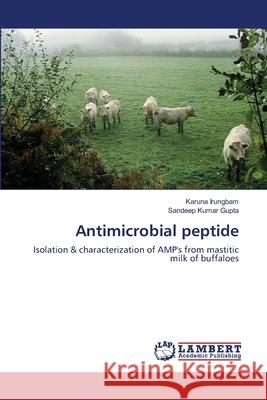Antimicrobial peptide » książka
Antimicrobial peptide
ISBN-13: 9783659338878 / Angielski / Miękka / 2013 / 92 str.
The peptide based antimicrobial defense is an evolutionarily ancient mechanism of host defense, found in diverse life forms. To date, hundreds of such peptides have been identified, indicating their importance in the innate immune system. Some of these peptides are potent antimicrobials. Mastitis is an important disease causing major economic losses to farmers. The prevention and treatment of mastitis represent a serious burden to producers. In spite of the efforts deployed to control it, the incidence of mastitis continues to be one of the highest of all the cattle diseases. Many antimicrobial peptides (AMP's) such as -defensin genes are expressed in the bovine udder, both in healthy mammary tissue (LAP, TAP and BNBD3), and infected tissues in a constitutive but mainly inducible manner by the mammary and play a role in the innate immune response of the mammary gland to mastitis. There are many reports on the bovine AMP's. However, little is known about the AMP's expressed within the buffalo mammary gland and milk. In this book an attempt has been made to reveal the expression of AMP's in mastitic milk of buffaloes and will be helpful for those researcher working on mastitis."
The peptide based antimicrobial defense is an evolutionarily ancient mechanism of host defense, found in diverse life forms. To date, hundreds of such peptides have been identified, indicating their importance in the innate immune system. Some of these peptides are potent antimicrobials. Mastitis is an important disease causing major economic losses to farmers. The prevention and treatment of mastitis represent a serious burden to producers. In spite of the efforts deployed to control it, the incidence of mastitis continues to be one of the highest of all the cattle diseases. Many antimicrobial peptides (AMPs) such as β-defensin genes are expressed in the bovine udder, both in healthy mammary tissue (LAP, TAP and BNBD3), and infected tissues in a constitutive but mainly inducible manner by the mammary and play a role in the innate immune response of the mammary gland to mastitis. There are many reports on the bovine AMPs. However, little is known about the AMPs expressed within the buffalo mammary gland and milk. In this book an attempt has been made to reveal the expression of AMPs in mastitic milk of buffaloes and will be helpful for those researcher working on mastitis.











